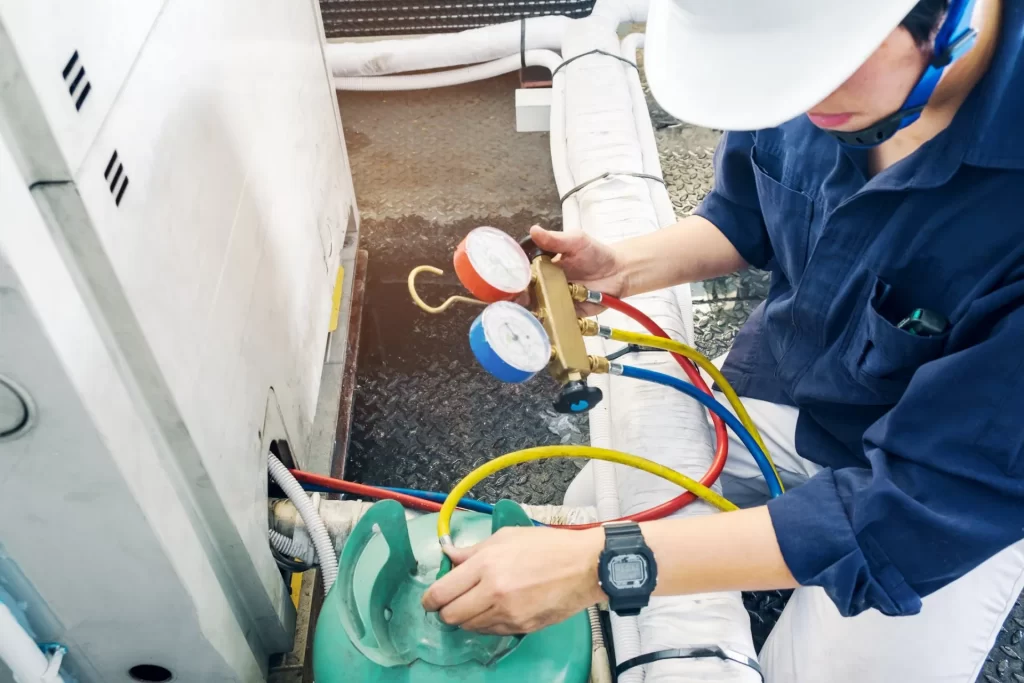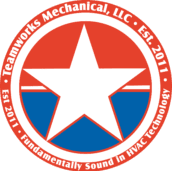Are you curious about gas pressure testing but feeling a bit lost? Don't worry; we are here to guide you. We've put together an easy-to-understand guide that covers everything you need to know about gas pressure testing. We'll talk about the different types of tests, why they're important, the tools you'll need, and how to stay safe while doing these tests. Plus, we'll share some tips to make sure your results are accurate. Let's dive into the world of gas pressure testing together!
Is Your Furnace Getting The Proper Fuel Pressure?
Making sure your furnace gets the right amount of gas is super important. It's like giving your furnace the right amount of gas to run smoothly. If the gas pressure is too high or too low, it can cause all sorts of problems, from not heating your home properly to being unsafe. To check if your furnace is getting the correct gas pressure, you can do a gas pressure test. It's like checking the gas gauge in your car to see if it's full. In this test, you use a tool called a manometer, which measures the gas pressure. You compare this reading to what the furnace manufacturer says is the right pressure. If they match, great! Your furnace is working well. But if they don't match, adjustments are needed to fix it.
Regularly testing your furnace's gas pressure is like giving it a health check. If there's a problem, you can fix it early before it becomes big. This not only keeps your furnace working well but also makes it last longer. So, remember to do gas pressure tests as part of your regular furnace care. It's a simple step that makes a big difference in keeping your home warm and safe!
Why is Gas Pressure Testing Essential?
Testing gas pressure is really important for a few big reasons. First, and most importantly, it keeps your home and family safe. When you test the gas pressure, you can find any possible leaks or problems. Gas leaks are super dangerous and can lead to fires or even explosions. So, by checking the pressure, you're making sure your home is safe. Gas pressure testing is also key for your furnace to work well. If the pressure is too high or too low, your furnace won't operate properly. This means your home won't be warm enough, your energy bills might go up, and your furnace could get damaged. Regular testing helps you spot problems early and fix them, making sure your furnace works efficiently.
Plus, keeping the gas pressure in check can make your furnace last longer. When the pressure is right, your furnace runs smoothly, putting less stress on its parts. This means fewer repairs and replacements, saving you money in the long run. So, by doing gas pressure tests, you're ensuring safety, efficiency, and a longer life for your furnace.

Conducting Gas Pressure Testing: Step-by-Step Guide
Testing gas pressure is really important for a few big reasons. First, and most importantly, it keeps your home and family safe. When you test the gas pressure, you can find any possible leaks or problems. Gas leaks are super dangerous and can lead to fires or even explosions. So, by checking the pressure, you're making sure your home is safe. Gas pressure testing is also key for your furnace to work well. If the pressure is too high or too low, your furnace won't operate properly. This means your home won't be warm enough, your energy bills might go up, and your furnace could get damaged. Regular testing helps you spot problems early and fix them, making sure your furnace works efficiently.
Plus, keeping the gas pressure in check can make your furnace last longer. When the pressure is right, your furnace runs smoothly, putting less stress on its parts. This means fewer repairs and replacements, saving you money in the long run. So, by doing gas pressure tests, you're ensuring safety, efficiency, and a longer life for your furnace.
Safety Precautions:
Safety is super important when doing gas pressure testing. Here are some easy steps to keep you and others safe. First, wear the right safety gear like glasses, gloves, and a gas mask if needed. Also, work in a place with good airflow to avoid dangerous gas buildup. Follow all the instructions for your testing tools, and be careful with pressurized gas. By being safe, you can do your gas pressure testing without any worries. Stay safe and take care!
Gather the Necessary Tools:
To do a gas pressure test, you need the right tools. The main one is a manometer, which measures the gas pressure. Your furnace maker might suggest other tools like a gas valve wrench or a pressure testing kit. Get all these tools ready before you begin. Having the right tools means you won't waste time, and your test results will be accurate. So, gather your tools, and let's start gas pressure testing!
Locate the Gas Valve:
Finding the gas valve is a key part of gas pressure testing. Usually, it's near your furnace or boiler and controls the gas flow to your heating system. To find it, look for a small metal lever or knob connected to a gas line. It might have a gas symbol or the word "gas" on it. If you're not sure, check your furnace or boiler manual. Once you find the gas valve, you're all set to do your gas pressure test!
Connect the Manometer:
Now, let's get started with the gas pressure test! The first step is connecting the manometer to your furnace's gas valve. This part is really important because it helps measure the gas pressure accurately. Make sure to connect the manometer tightly to the gas valve to prevent any leaks or wrong readings. When it's securely connected, you're set for the next step in the gas pressure test. Remember, a good connection is key for getting the right results, so double-check everything before you move forward.
Open the Gas Supply:
Now that the manometer is safely connected to the gas valve, let's open the gas supply. This is where gas flows into the manometer, giving you the right pressure reading. Find the lever or knob on the gas valve and turn it counterclockwise. Do it slowly and carefully to avoid sudden gas bursts. Once the gas supply is open, you're set for the next step in the gas pressure test.
Record the Initial Pressure:
Now that the gas supply is on, let's note down the starting pressure. This step is super important because it gives us a starting point for the gas pressure test. Use the manometer to get the pressure reading. Make sure the reading is steady before you write it down. This starting pressure will help us see if any changes are needed later. Take your time with this step to be accurate and gather the info you need for the rest of the gas pressure test.
Activate the Furnace:
You've noted down the starting pressure, now let's turn on the furnace. Leave it running for a few minutes to settle. While it's running, watch the pressure reading on the manometer. This shows how the pressure changes when the furnace is working. Pay attention to any big changes and compare them to what the manufacturer suggests. By doing this, you make sure the pressure stays just right for the furnace to work its best.
Compare the Readings:
You've finished the first gas pressure test and double-checked it to be sure it's accurate. Now, let's compare the readings. This part is really important because it shows if the gas pressure is where it should be or if we need to fix something. Look for any differences in the readings and compare them to the recommended pressure levels. This comparison helps us understand how well the gas system is working and if there are any problems we need to fix. By looking closely at the readings, we can make smart decisions and do the right things to keep the gas pressure just right.
Adjusting the Pressure:
After watching the pressure while the furnace is on, it's adjustment time if needed. If the pressure is not where it should be according to the manufacturer's recommendation, you'll need to fix it. Usually, this means tweaking the gas valve. Follow the manufacturer's instructions for adjusting the pressure and do it slowly to prevent sudden changes. Once you've made the changes, check the pressure reading again to make sure it's just right. Fine-tuning the pressure like this makes sure your furnace works its best, keeping your home warm and cozy.
Repeat and Monitor:
After doing the first gas pressure test, it's really important to do it again to be sure the results are right. This is super crucial if the first test showed any problems. Doing the test again helps us make sure the first results were accurate and helps us spot any changes in gas pressure. Keeping an eye on the gas pressure over time helps us see if anything is going wrong or if there are patterns in how the pressure changes. This is really useful for fixing problems early or doing maintenance to prevent issues. Remember, checking regularly is the way to keep your gas systems safe and working well.
Conclusion:
Testing gas pressure is really important for your furnace to work safely and well. It helps find any gas leaks or issues, keeping your home safe. When you do the test, always put safety first. If you're not sure, ask a professional for help. Regular tests and maintenance not only make your furnace last longer but also give you peace of mind, knowing your home is safe, especially in chilly winters.




















